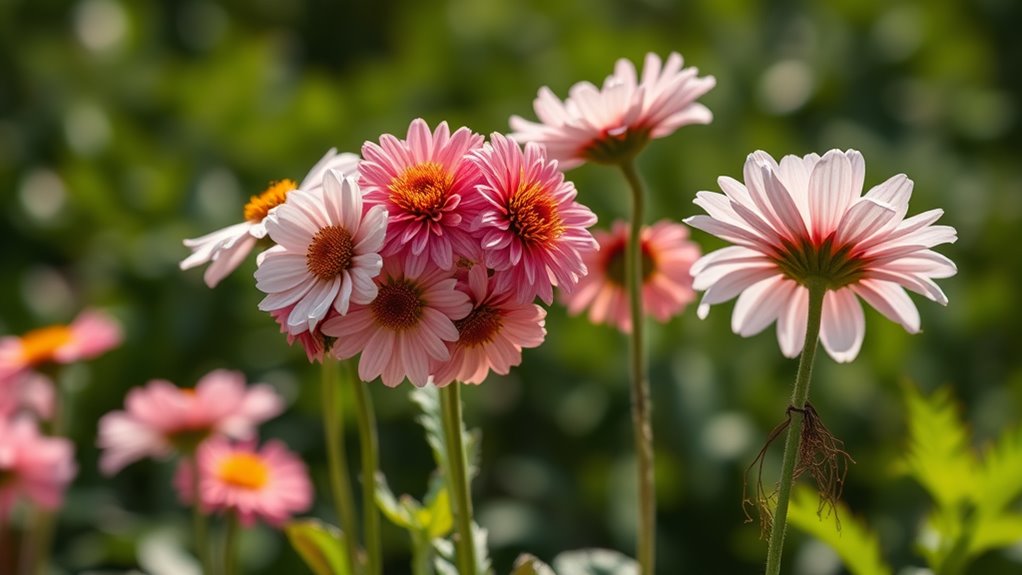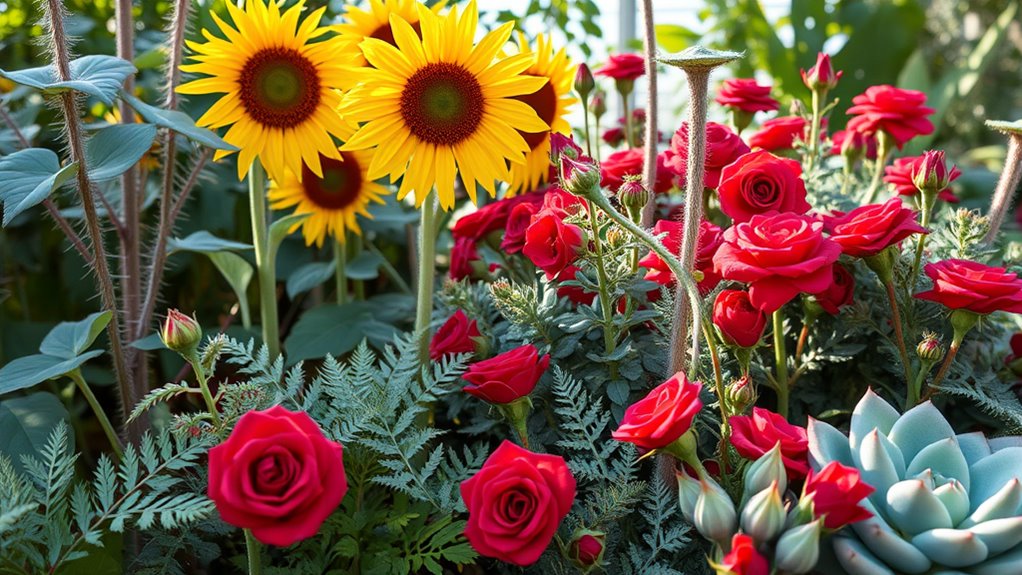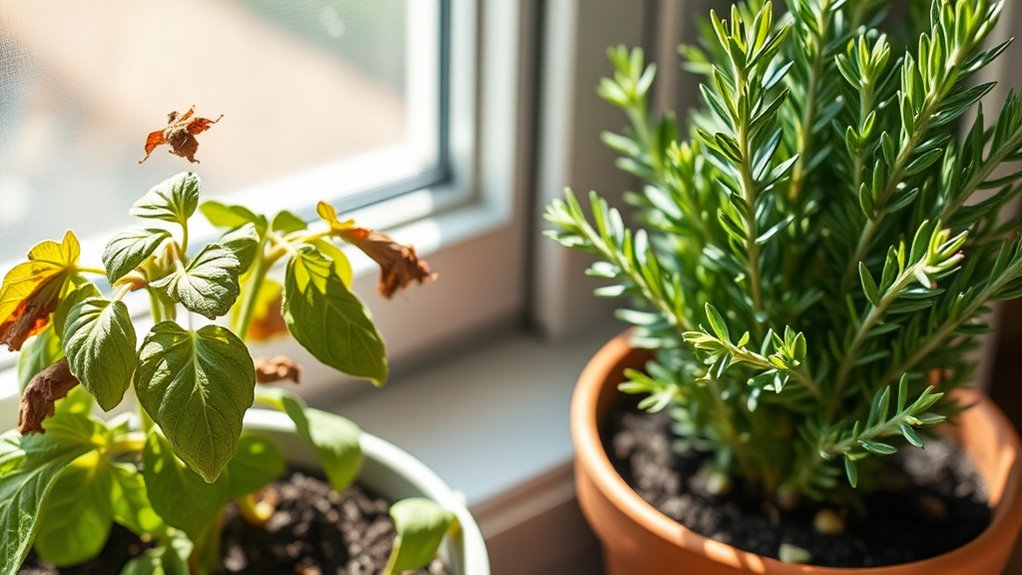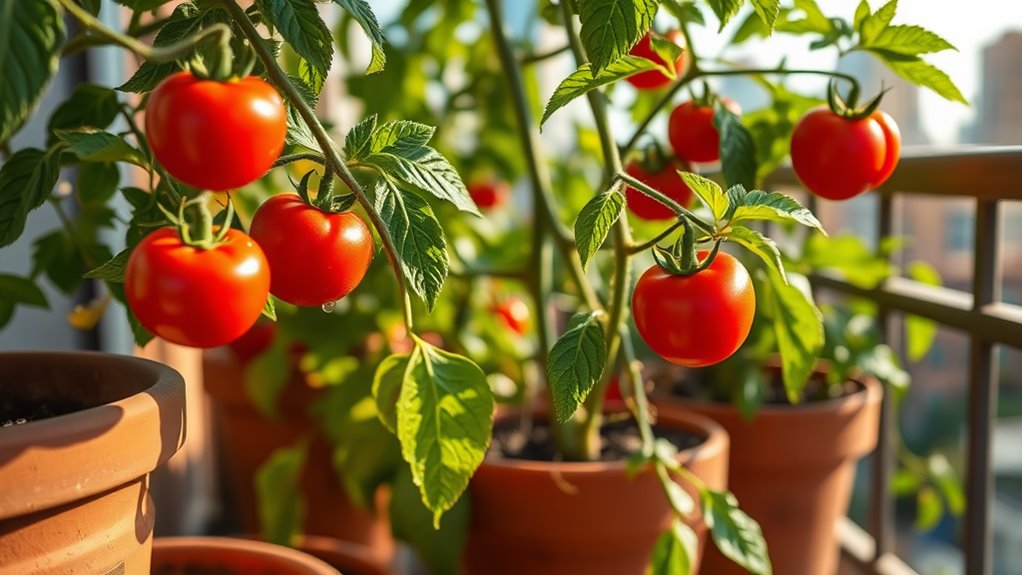I Used to Make These 3 Flower Gardening Mistakes – Do You.
If you’re overwatering your flowers, you’re drowning their roots, leading to yellow leaves and wilting that can kill your plants. Ignoring soil quality means missing key nutrient deficiencies and pH imbalances, which stunt blooms and weaken growth. Planting in the wrong spot—too much sun or poor drainage—exposes them to damage from wind or rot. These common errors are simple to fix with regular checks and adjustments, so keep going for the tips that will make your garden thrive.
Key Takeaways
- Overwatering flowers can lead to root rot; check soil moisture before watering.
- Ignoring soil quality stunts plant growth; test and amend soil regularly for nutrients.
- Planting in the wrong spot harms blooms; match plants to sunlight and drainage needs.
- Recognizing overwatering signs, like yellow leaves, prevents plant decline early.
- Soil testing identifies deficiencies; adjust pH and fertility for healthier gardens.
Overwatering My Flowers
When you overwater your flowers, you’re essentially drowning their roots, which leads to oxygen deprivation and root rot.
Overwatering tops the list of common flower mistakes, causing yellowing leaves, wilting, and eventual plant decline. You might spot mushy stems or fungal growth as early warnings, signaling stressed roots gasping for air.
To avoid this error, test soil moisture regularly with your finger; water only when it’s dry. By correcting this habit, you’ll prevent root damage, foster resilience, and enjoy robust blooms without the pitfalls of excess water. Moreover, learning about expert watering techniques can help you avoid these pitfalls altogether.
As detailed in expert guidance, implementing signs of overwatering monitoring can help you maintain a balanced watering routine for healthier plants.
Ignoring Soil Quality
Overlooking soil quality ranks as a common pitfall in flower gardening that undermines your plants’ health.
You can’t expect vibrant blooms if your soil lacks nutrients, proper pH, or good drainage. Poor soil leads to weak roots and frequent failures, so take action now. Regular soil testing is key to enhancing plant health for more robust and productive gardens.
-
Test your soil: Regularly check pH and nutrient levels to identify deficiencies before planting.
-
Amend effectively: Mix in compost or organic matter to improve structure and fertility for better root growth.
-
Monitor ongoing: Observe and adjust soil conditions seasonally to maintain optimal health and prevent issues.
Unlocking garden success through soil testing can help you identify and remedy issues that may be causing your garden to fail.
Planting in the Wrong Spot
Planting in the wrong spot is another common error that can sabotage your flower’s growth and vibrancy.
You’ll stunt blooms if you ignore sunlight needs—sun-loving varieties fade in shade, while shade-dwellers scorch in full sun. Windy areas expose plants to damage, and poor drainage leads to root rot. Moreover, overlooking soil testing can prevent you from identifying issues like improper pH levels that affect plant health.
Always assess your site’s conditions first: measure light exposure, test soil moisture, and evaluate wind patterns.
By choosing the right location, you’re setting up success—your flowers will thrive with minimal effort, rewarding you with a stunning garden.
Don’t overlook this step; it’s crucial for healthy results.
To elevate your garden further, consider incorporating plant selection techniques for a more professional and cohesive design.





